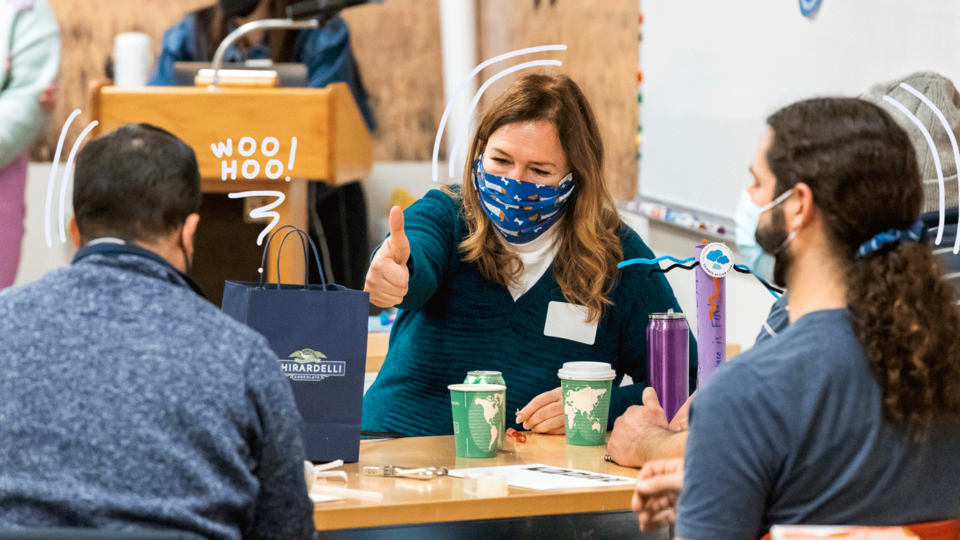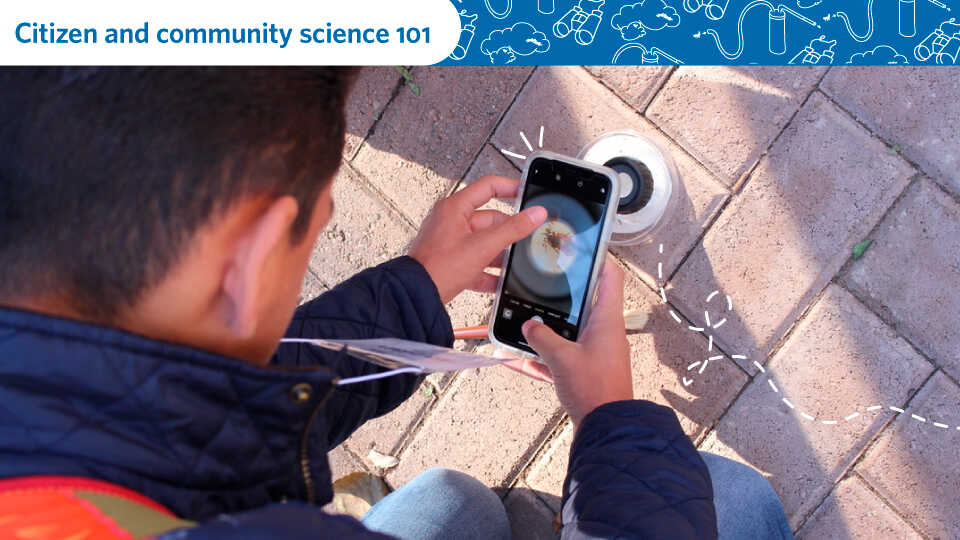

Step into our world. Take a learning journey with Science Action Club’s modules.
Science Action Club (SAC) takes learning to the next level. Grow as you learn alongside youth, and watch your abilities shine. Turn learning into an exploration with citizen and community science. Use our free resources below and explore other resources created by the Academy and SAC partners.
In our debut module, SAC guides you through the ins and outs of community science and how it gets youth, staff, and you excited and engaged with the natural world.

Citizen and community science 101
Community science puts scientific discoveries at your fingertips. Its simplicity makes science explorations accessible and cultivates enthusiasm for environmental learning. When you join the citizen and community science movement, you join a collaborative community of experts and enthusiasts. Discover some of the ways citizen and community science makes learning an adventure below:
Community science, or participatory research, opens the doors for curious minds to observe, document, and share their discoveries with a community of nature enthusiasts. Integrating community science into educational programs enables youth participation in direct data collection, offering concrete hands-on experiences that enhance science education by putting the youth in the place of scientists.
Watch, download, and discuss using the resources below to introduce community science to those you work with.
- Watch and learn: Watch the Community science (Science Action Club) video to discover the magic of community science and understand the value of your contributions.
- Share with youth: Youth may have questions about why data collection matters to them, not just scientists. Understanding the importance of being a community scientist helps youth make authentic connections to the natural world around them. Use this roadmap (What’s the big deal with citizen and community science?) to inspire youth to join the global movement.
- Language matters: While it is commonly known as citizen science—in reference to citizens of the world—some feel that the exclusionary nature of that term discourages non-citizens from participating. The term community science is sometimes used to avoid that misinterpretation and demonstrate a commitment to inclusivity. Without widespread consensus, SAC uses the phrase citizen and community science in our curriculum but community science on this page. We encourage you to consider how these different terms may be interpreted by the youth, staff, and families you engage, and select the one most likely to inspire. By any name, this powerful work can only be accomplished by a global movement of diverse contributors taking positive action for science and society.
As community scientists, you learn to approach the world with curiosity. While documenting what you observe is a crucial part of the process, breaking up the practice into smaller steps will make the data collection experience authentic to the learner and rooted in what’s in their local community.
Use these PDFs to practice observing nature, facilitate your first protocol, and learn outdoors safely.
- How to observe: Start recording nature using this template scientist’s notebook. Start discussion with sentence stems that establish a framework for the thought processes of youth, guiding them to connect prior knowledge to discoveries they make.
- Try an activity: Conducting scientific observations is possible anytime, anywhere, ranging from parking lots to parks to windows. Download and start using iNaturalist —a community science project and online social network for nature research— with SAC’s sample activity. Use these helpful tips from iNaturalist during your outdoor expedition.
- Tips for Facilitating Groups Outdoors: Taking learning outdoors is shown to help youth thrive and learn but takes planning to execute smoothly. Use these strategic steps to help maintain the groups’ focus so youth can stay engaged in their research and enjoy the experience.
Join the global community science community in your backyard. In addition to partner projects, here are some resources that will help acquaint you in your journey of exploration and participation.
We highlight community science partners and projects happening now. Check back for what’s the latest in nature news.
- Projects we love: Nature is everywhere, even in the biggest of cities. City Nature Challenge is an international event that challenges people across the globe to find and document wildlife in their cities using iNaturalist. Prepare to participate using this SAC video for inspiration and discover locations in your city where you can make observations.
- How to look closer at your local nature: Print and carry this zine crafted by artist Arya Natarajan, showcasing ways to engage as a community scientist wherever you are.
- Read more research: Explore the Community Science initiative launched by the Association of Science and Technology Centers (ASTC). They believe in advancing community priorities through local science and technology centers like the California Academy of Sciences.